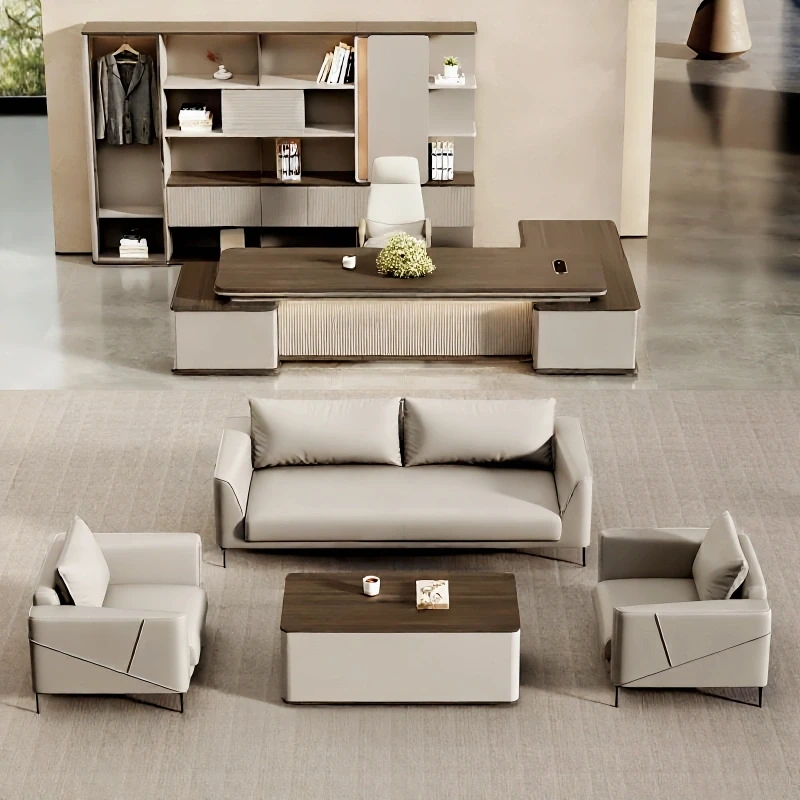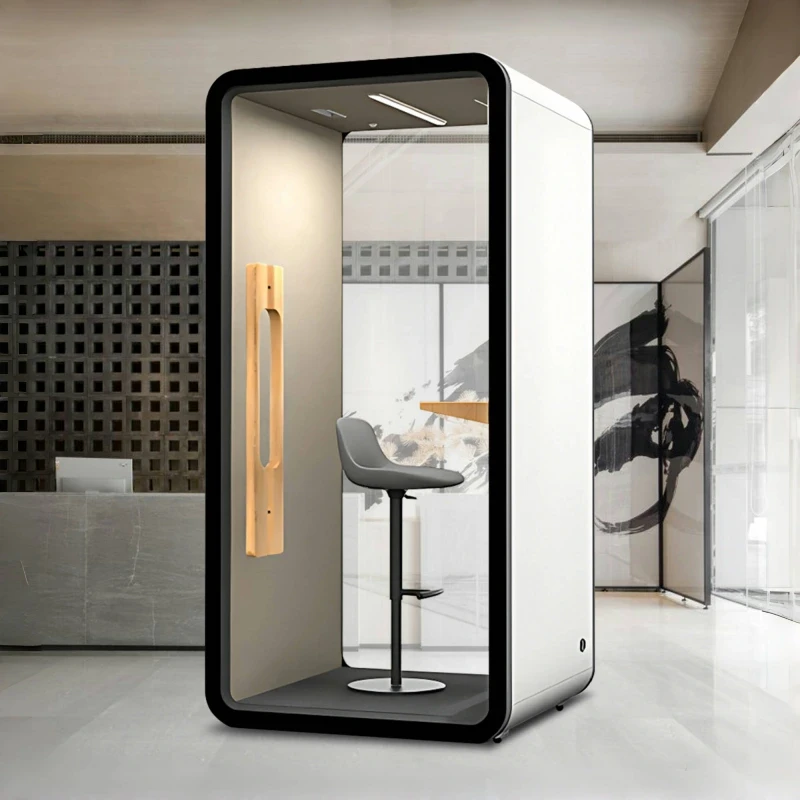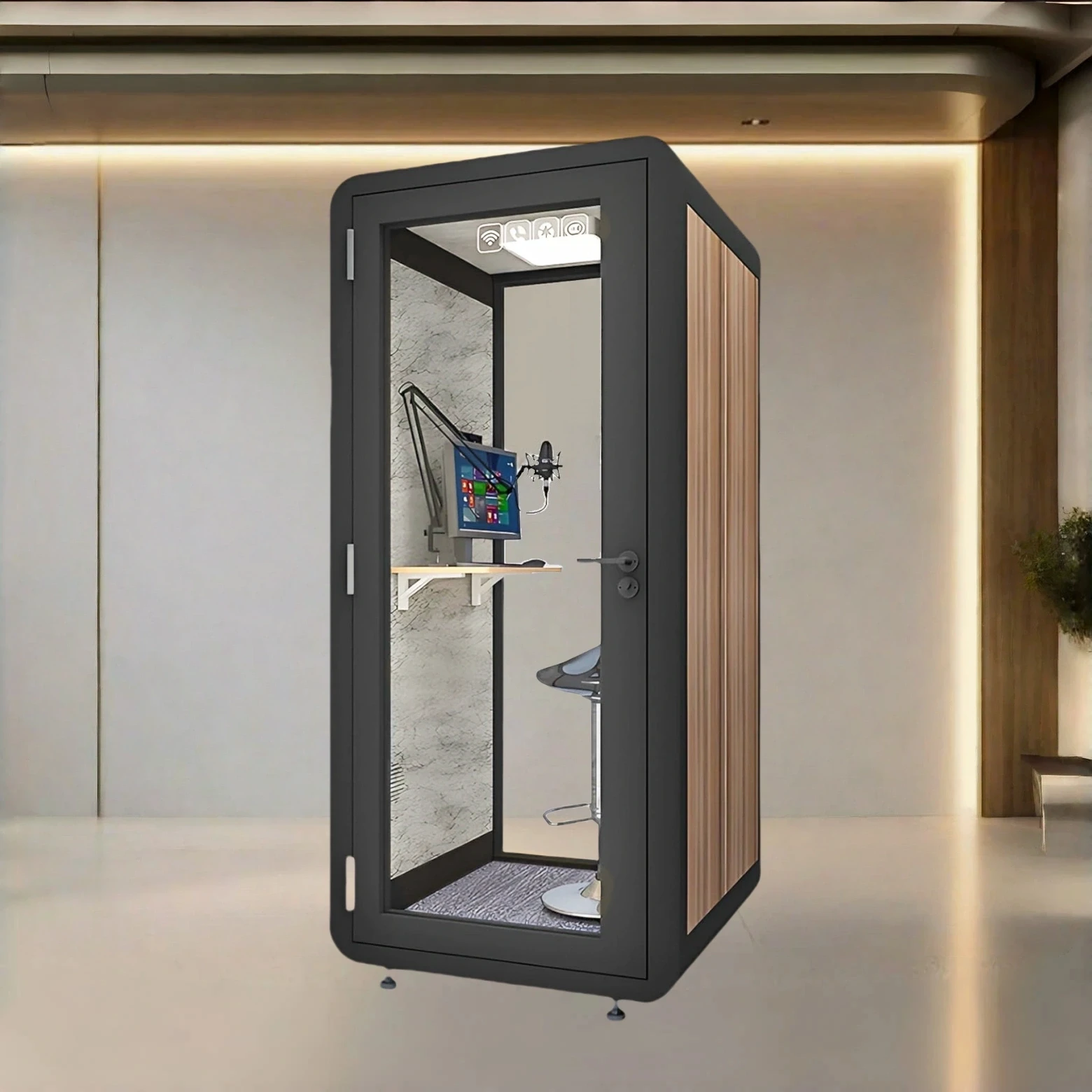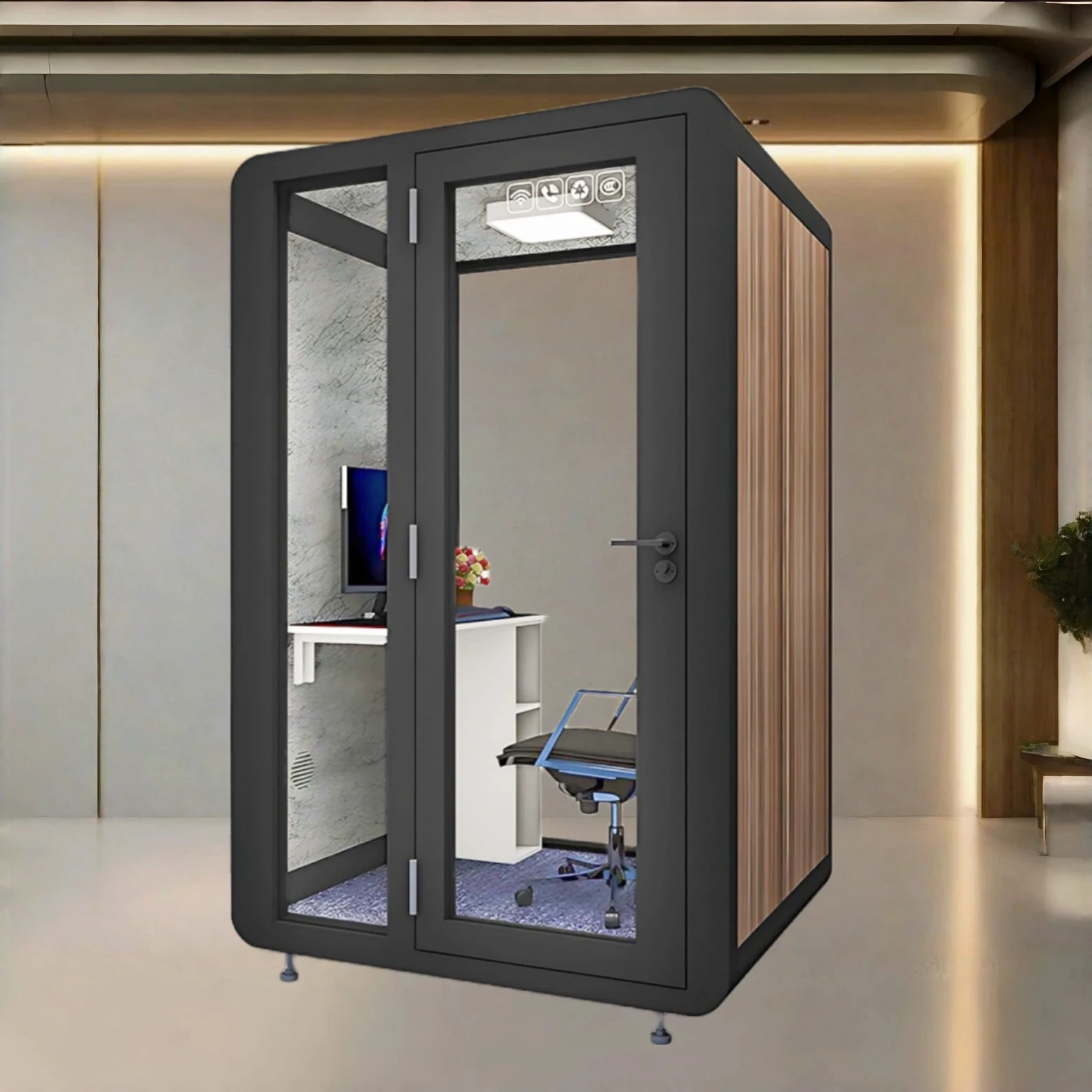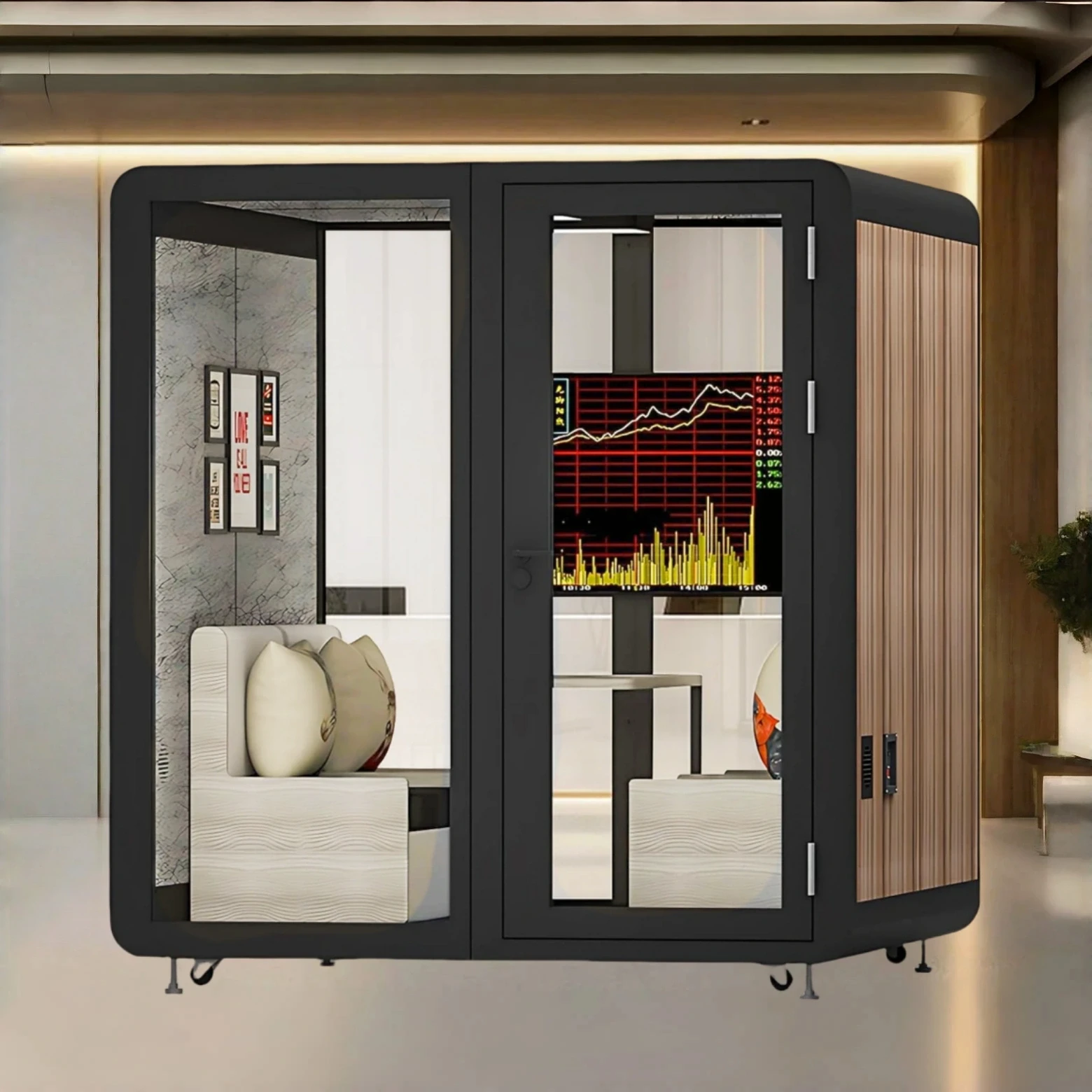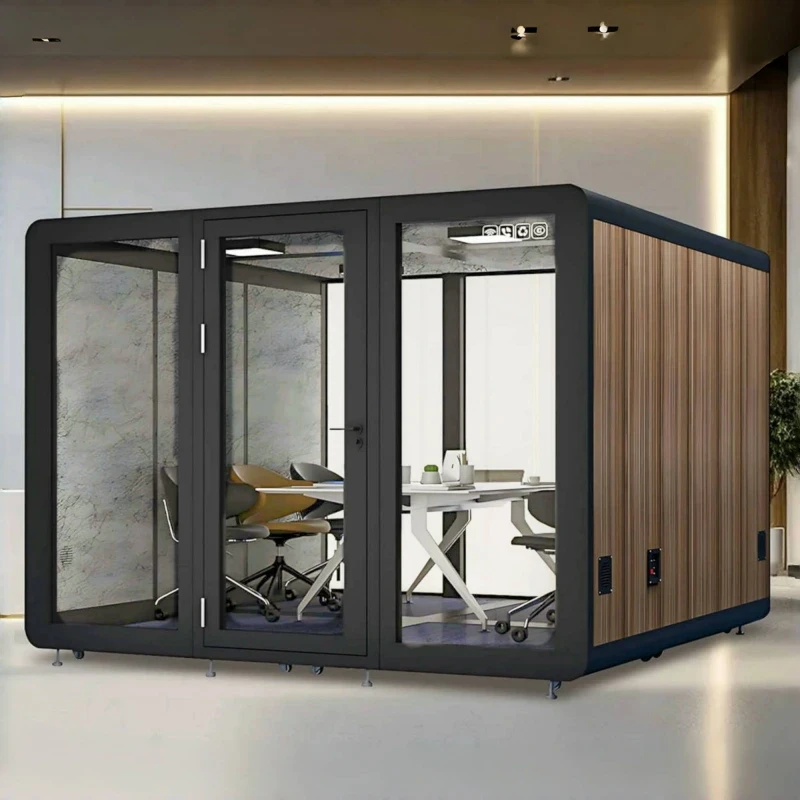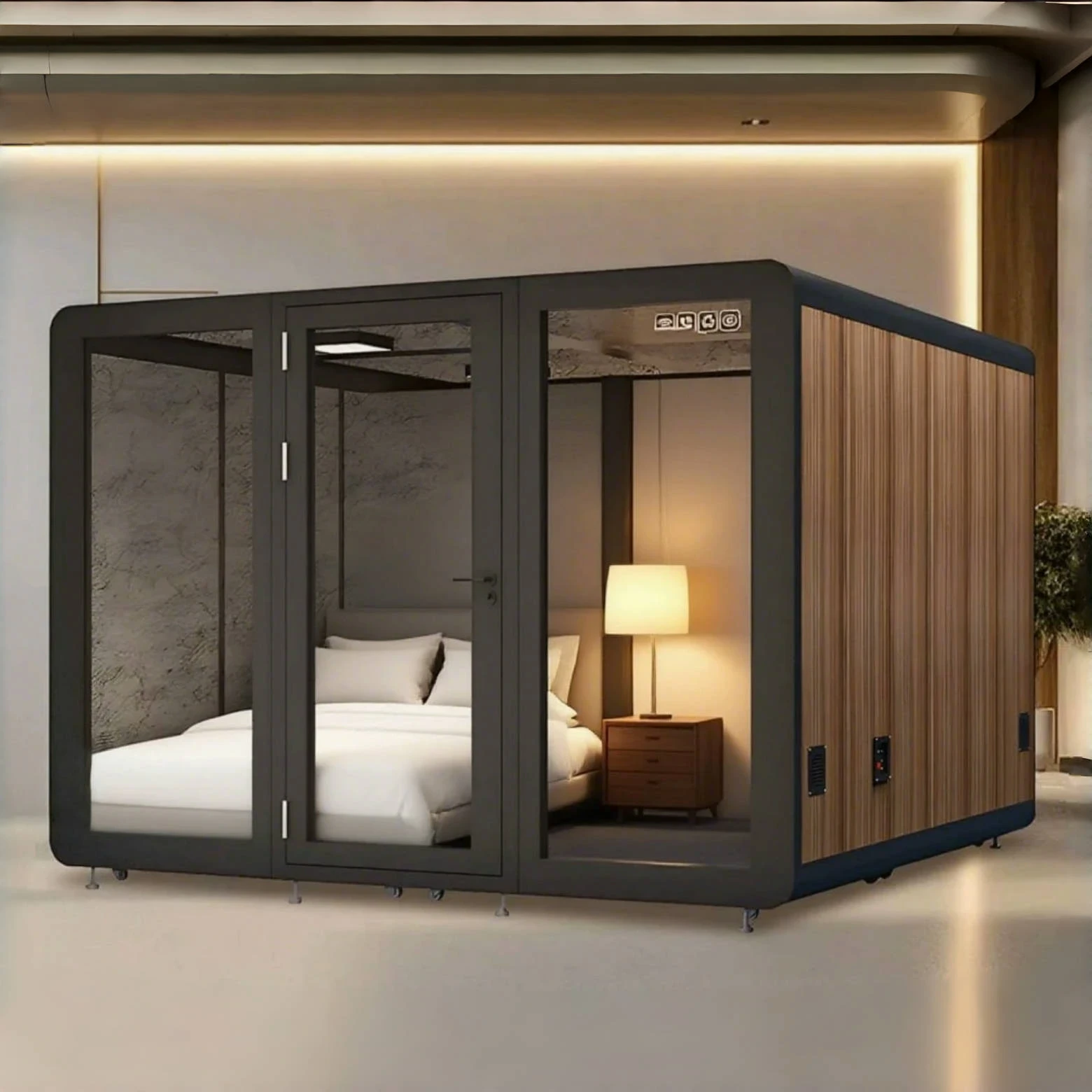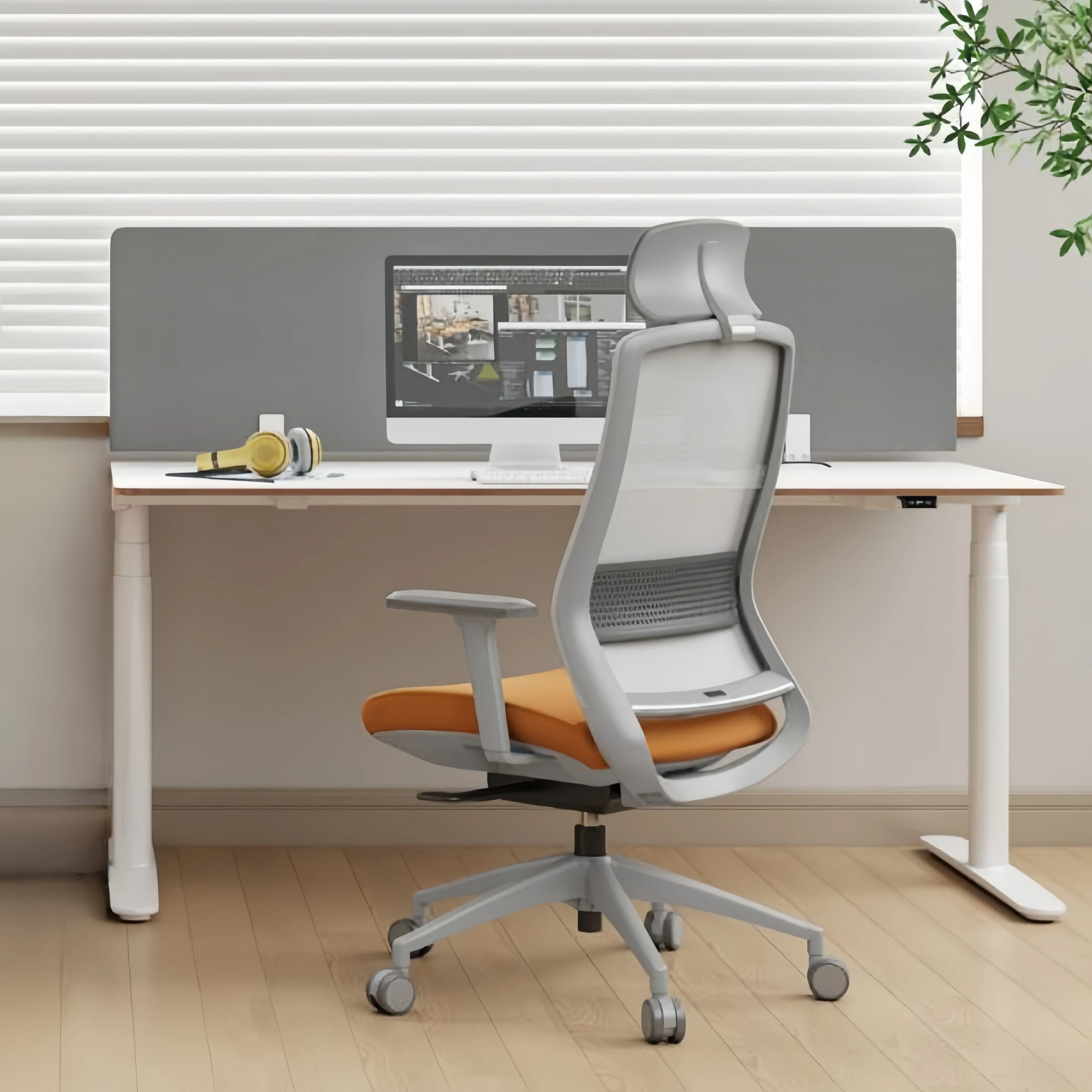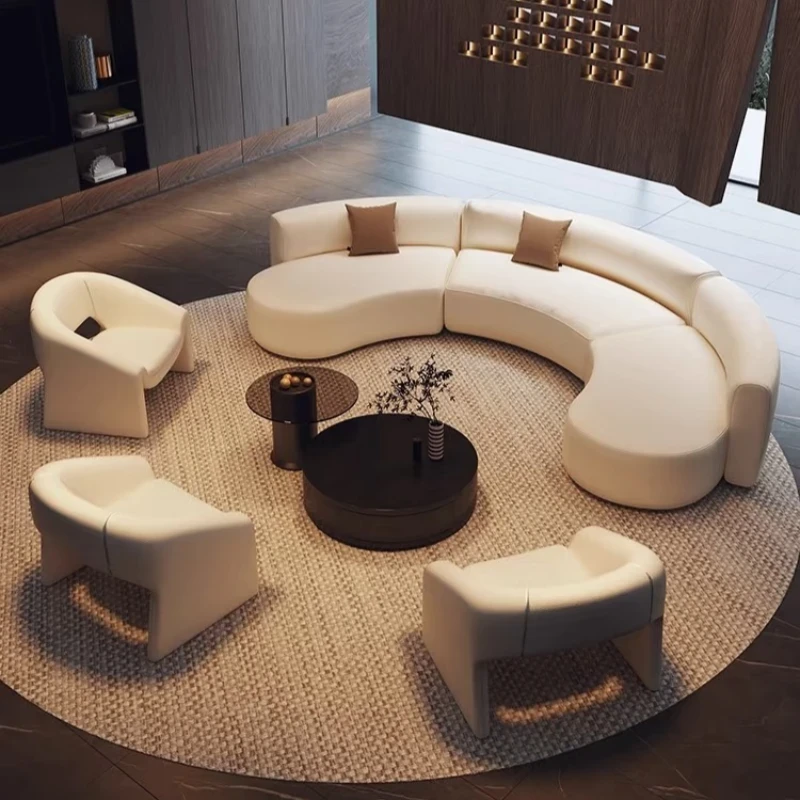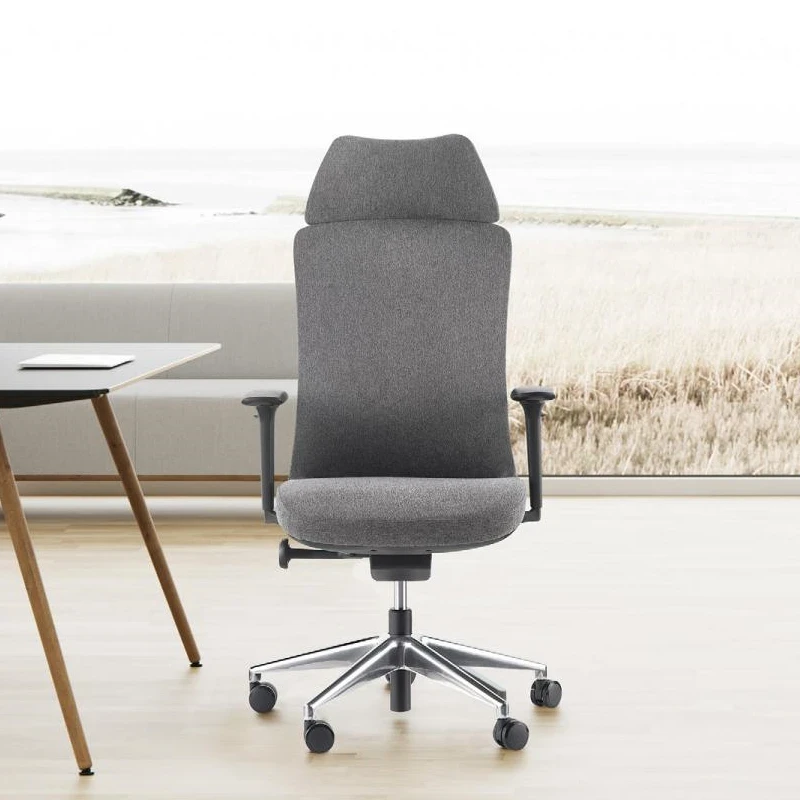Standing vs. Sitting: Is a Standing Desk Really Healthier?
Oct 16, 2025
This article provides a basic understanding of ergonomic chairs, detailing their various parameters. It's quite long, so if you prefer, skip to the end to learn how to choose the right ergonomic chair. Since prolonged sitting is unavoidable, be kind to yourself and get yourself an ergonomic chair!
Are ergonomic chairs worth buying? Some people think ergonomic chairs are just a waste of money, but that's not the case. Ergonomic chairs have gained widespread recognition, and for good reason. They can help improve your sitting posture, prevent spinal and other skeletal deformation, and increase comfort. If you're not convinced, try an ergonomic chair and see for yourself the difference between an ergonomic chair and a regular one. Why are ergonomic chairs so expensive? Even regular chairs can cost tens of thousands of yuan. Ergonomic chairs require significantly more investment in design and production than regular chairs. After all, you get what you pay for. The price tag is justified. Of course, ergonomic chairs aren't as magical as some vendors claim. They can only improve your sitting posture and enhance comfort. While prolonged use can improve deformed bones, it can't replace treatment. Therefore, don't expect a chair to cure inherited lumbar muscle strain. However, you can prevent it from the source, and an ergonomic chair is essential.
1. The Dangers of Prolonged Sitting and Improper Sitting
If you pay more attention, you'll notice a wide variety of unusual sitting postures. Long-term poor sitting posture can lead to lumbar muscle strain, poor blood circulation, and even worse, spinal disease.
Sedentary people who keep their heads down or hunched over for extended periods of time can cause stiffness in the cervical spine, impairing blood flow to the cervical arteries. In severe cases, this can lead to loss of natural curvature, bone hyperplasia, and various cervical and spinal disorders, causing symptoms such as headaches, dizziness, fatigue, and back pain. Furthermore, prolonged bending or sitting can cause the entire body weight to rest on the lower back, placing significant pressure on the lumbar spine and causing lumbar deformity or a herniated disc.
Improper sitting posture can easily lead to spinal deformity. This not only predisposes to various bone diseases but also affects the aesthetic appearance of the body. Therefore, maintaining a perfectly S-shaped spine is crucial. The following two images are examples of spinal deformity found online. A brief look at them will help you understand the appearance of spinal deformity.
Scoliosis Caused by Improper Sitting Posture
II. How to Maintain a Correct Sitting Posture?
Different sitting postures place varying stresses on the spine. As shown in the image: forward-leaning sitting > upright sitting > standing > leaning back > supine sitting.
In our daily office work, the most common sitting postures are those shown in the image below. You can imagine the stresses placed on the spine.
When sitting, keep your chair as close to your desk as possible, with your hips, waist, and back pressed against the chair back. If necessary, place a cushion between your waist and the chair back. Keep your head and neck in a neutral position. Adjust your chair height so that when your arms hang naturally, the desk surface is at elbow level. Keep your knees slightly higher than your hips, allowing your feet to fully contact the floor. If necessary, place a footrest under your desk.
The ideal chair seat height is one that allows your feet to rest flat on the floor, with a 90° angle between your calf and thigh.
The chair back should conform to the curve of your back and waist to prevent spinal deformities.
Aiming for a 90° angle between your forearm and upper arm can reduce shoulder pain.
Align your monitor directly with your chair to avoid squinting or abnormal spinal curvature.
Maintain an optimal distance of about a fist from the desk and an arm's length from the monitor. In this position, the lower back is fully supported by the chair back, and the spinal system and its associated muscles are fully relaxed, resulting in a naturally comfortable and relaxed feeling. Fatigue is minimized, and the spine and intervertebral discs are less susceptible to degeneration. The head and neck are in a natural neutral position, neither excessively flexed nor extended, maintaining a normal cervical curvature and maximally relaxing the neck muscles.
3. Why is an ergonomic chair necessary?
The concept of ergonomics has been around for decades. Essentially, ergonomics involves adapting tool usage to the natural shape of the human body. This allows the user to work without any active physical or mental adaptation, thus minimizing fatigue. Ergonomic chairs, named after the concept, have become a prominent product. In fact, many ergonomic products are also found in our daily lives, such as many gaming mice, which are ergonomically designed.
Among modern ergonomic furniture specifications, chairs have the most ergonomic criteria compared to other furniture, and therefore present the greatest design challenges. This is because, aside from beds, chairs spend the most time in contact with the human body. Consequently, a good ergonomic chair can reduce the strain on leg muscles, lower energy consumption, and promote smooth blood circulation. It can also prevent bone deformation caused by unnatural sitting posture, significantly improving work efficiency and user comfort.
A good ergonomic chair must have a headrest, backrest, lumbar pillow, armrests, and seat cushion that conform to the body's curves. This creates a sense of relaxation and effectively distributes pressure across the body. Therefore, ergonomic chairs can, to a certain extent, assist with posture adjustment and alleviate various discomforts caused by improper sitting posture.
IV. Ergonomic Chair Design Analysis
Ergonomic chair specifications can be categorized into three main areas: the backrest, seat, and armrests. Ergonomic chairs place particular emphasis on backrest indicators. Without a backrest, the upper body lacks proper support, often leading to hunched postures and shrugged shoulders, which can cause abnormal spinal deformation.
1. Backrest
The three key elements are backrest curvature, backrest tilt, and backrest edge. Backrest curvature and backrest tilt reduce pressure on intervertebral discs, stabilize the pelvis, and maintain a normal S-shaped spine. A proper backrest tilt reduces back pressure and allows upper body muscles to relax. Most chairs also feature a headrest that provides excellent support for the neck.
Image sourced from the internet. In its natural state, the human spine is shaped like an "S." In this state, pressure on each intervertebral disc is balanced, lower back muscle activity is minimized, and fatigue is less likely to occur. When the spine is in an unnatural position, pressure within the intervertebral discs is unevenly distributed, increasing muscle activity and causing back pain and fatigue. The backrest tilt, dimensions, and lumbar support points should be designed to maintain the normal curvature of the spine. When the backrest angle is set to 115°, the human spine aligns closer to its natural curvature, making it more comfortable.
2. Seat
Four factors contribute to seat performance: seat height, seat depth, seat width, and seat material. A good seat material should be breathable, provide a certain amount of friction to reduce body slippage, and be moderately soft and hard to maximize contact surface and minimize uneven pressure distribution. Seat height, width, and seat depth must be aligned with the body's dimensions to ensure optimal user experience.
Image source: Internet. Inappropriate seat height, seat depth, and seat inclination can all cause fatigue. When sitting on seats of different heights, the angle between the calf and thigh varies, altering the pressure on the legs and buttocks and affecting comfort. When the seat is low, the angle between the calf and thigh is less acute, placing pressure primarily on the buttocks. Excessive pressure on the ischial tuberosity can easily cause soreness and numbness in the buttocks. When the seat is too high, the angle between the calf and thigh exceeds 90°, compressing the front of the thigh and restricting blood flow, which can easily lead to leg soreness. An appropriate seat depth should ensure that the lumbar spine is supported by the backrest to maintain a normal lumbar curve, while a certain distance between the popliteal fossa and the front of the seat ensures smooth blood flow to the legs. A shallow seat depth creates greater pressure due to the reduced contact area with the seat surface. A deep seat can compress the popliteal fossa, resulting in poor blood flow to the legs or ineffective lumbar support, all of which can lead to fatigue. A seat tilted too far forward can cause the body to slump, while a seat tilted too far back can compress the lower back and cause a change in lumbar curve.
3. Armrests
Ergonomic factors related to armrest specifications include armrest height, armrest width, and armrest length. Armrests primarily support the arms and shoulders while sitting. Armrests are essential for leisure chairs, but not necessarily for work chairs. Some work chairs may omit them for convenience. These factors often influence and interact with each other. For example, seat depth determines armrest depth, while seat inclination affects backrest inclination.
The armrest height should be determined based on the height of the human arm when seated. If the armrests are too high, the arms cannot rest naturally on the armrests, forcing the shoulders to hunch, increasing neck and shoulder muscle activity and causing neck and shoulder discomfort. If the armrests are too low, the user must bend over to place their arms flat on the armrests, stretching the lower back muscles and leading to lumbar muscle soreness. The armrest spacing should ensure a sufficient range of motion after sitting. Narrow armrest spacing makes the user feel cramped and difficult to adjust their sitting posture. If the armrests are too far apart, the arms do not receive adequate support, causing shoulder fatigue.
5. Comfort Design of Ergonomic Chairs
For office workers and gaming enthusiasts, prolonged sitting can be detrimental to the health. Most standard office chairs and ordinary writing chairs for home use fail to effectively correct sitting posture, leading to lower back and cervical pain becoming occupational health hazards for many. Compared to occupational health issues caused by prolonged sitting, the cost of a comfortable ergonomic chair is undoubtedly a significant investment, reducing both pain and medical expenses.
Ergonomics primarily adjust comfort in the following areas:
1. Headrest:
The headrest's height and rotation are adjustable, allowing the user's cervical spine to naturally align with the headrest, optimizing sitting posture and making working a pleasant experience. The optimal position is when the headrest fully supports your cervical spine. A good headrest can perfectly align your neck, reducing pressure on the cervical spine, effectively alleviating cervical deformation, and preventing the onset of cervical spondylosis.
2. Chair Back:
The optimal lumbar support lies between the third and fourth vertebrae. The entire chair back is height-adjustable, easily meeting the needs of different users and reducing the majority of the body's weight from being borne by the lumbar vertebrae. Ordinary chairs are extremely simple in design and fail to effectively conform to the spine, placing significant pressure on parts of the vertebrae. This hunching is common for many people who sit for extended periods of time, leading to spinal deformation that is difficult to correct. Ergonomic chairs, on the other hand, take this pressure into account in their back design, effectively conforming to the spine and distributing the force evenly, thus avoiding hunching.
3. Lumbar Support:
A separate, movable lumbar support concentrates the rebound force in the support, providing the user with the most precise support. The adjustable lumbar support adjusts its curvature to allow the entire lower back to rest comfortably against the lumbar spine, relaxing the spine and relieving spinal fatigue. Some ergonomic chairs feature a separate backrest design with a separate lumbar pillow that automatically adjusts to the user's lumbar shape. Whether sitting upright or reclining, this provides balanced, comfortable support and relieves lumbar pressure.
4. Armrests:
Adjust the armrest height and angle to create a smoother transition between your hands and the worktop, preventing mouse hand strain. Features include free angle adjustment, stepless locking, a curved backrest design, bow-shaped frames with enhanced strength and elasticity, and streamlined curved armrests. Typical chair armrests are fixed and cannot be adjusted freely. However, body shapes vary, so prolonged use of a mouse or keyboard can cause shoulder strain, potentially leading to frozen shoulder and mouse hand strain – a detrimental outcome. Ergonomic chairs are designed with this in mind, featuring 3D adjustable armrests that adjust to your body shape, minimizing shoulder strain. Some ergonomic chairs offer 4D adjustment, offering powerful functionality.
6. Safety Considerations for Ergonomic Chairs
Safety is a key consideration for any product. After all, your body is yours, and you only live once, so safety comes first. So, what safety features should we consider when choosing an ergonomic chair? The safety performance of an ergonomic chair primarily focuses on three key areas: the gas spring, the stabilization mechanism, and the legs.
1. Gas Cylinder
The safety of a gas cylinder is primarily determined by nitrogen purity, sealing performance, and material strength. Failure to meet any of these requirements can pose a safety hazard, potentially reducing the service life or even exploding. Therefore, the safety of the gas cylinder cannot be ignored. In terms of gas cylinder grade, most ergonomic chairs on the market use Grade 3 gas cylinders, with a small number using Grade 4. Regarding certification standards, internationally recognized certification bodies include SGS (SGS) and TUV (TÜV Verband der Verein), both of which are internationally recognized third-party product quality control inspection organizations. When choosing an ergonomic chair, be sure to choose one certified by a reputable inspection organization to enhance safety.
2. Stability Mechanism (Chassis)
The stability mechanism, also referred to as the chassis in some articles, is a critical component of an ergonomic chair. It connects the chair body to the gas cylinder and supports the reclining function of the ergonomic chair. Many ergonomic chairs feature reinforced stability mechanisms, or chassis, and are also explosion-proof. Therefore, a good stabilization mechanism can effectively protect your back if the gas pressure rod fails. Some stabilization mechanisms even offer a reclining lock when you lean back, preventing you from tipping over.
3. Chair Legs
The chair legs bear the entire load, including the weight of the chair body and the person. Ergonomic chairs generally use one-piece die-cast metal legs, which can easily support the weight of an average adult. Some use nylon, but if they break, they could cause the chair to tip over. Therefore, choose one-piece metal legs for their strong support. Use PU silent pulleys on the bottom to effectively reduce noise and protect wooden floors. Aluminum alloy is the preferred material for chair legs, followed by steel, and finally nylon.
7. How to Choose the Right Ergonomic Chair?
1. The Human Factor
When choosing an ergonomic chair, the human factor is crucial. After all, you're the one sitting on it, so it must fit you. Personal comfort is paramount. Therefore, choosing an ergonomic chair that suits you requires careful consideration of the human factor, including height, weight, body shape, and sitting posture. Based on the human body's sitting dimensions, Xiaoyi has found a statistical table of standard sitting dimensions. Those who understand this can refer to the table to determine their own size and help them choose the right ergonomic chair. This table represents average dimensions, so the error is minimal, eliminating the need for personal measurements.
Based on the table above, Xiaoyi will illustrate how to use it. I've found the parameters of an ergonomic chair online and compared them to analyze whether the chair is suitable for you.
Sitting height represents the maximum height of the upper body. Ergonomic chairs cannot be higher than the sitting height. 947mm > 705mm, which is obvious.
Calf plus foot height represents the height of the lower body when sitting. To the original parameters, add shoe height and the seat cushion drop. Taking 50mm, this gives a value of approximately 489mm, which falls within the 430-530mm range.
The average sitting cervical point height is 691mm. The calculated center position of the headrest yields 620mm, but this is within acceptable limits, considering the seat cushion drop and adjustable headrest height.
The average sitting shoulder height is 631mm, but the chair's is only 530mm. Considering the seat cushion drop, the shoulders protrude when sitting upright. This, combined with the calculation of the cervical point height, is within acceptable limits. Elbow height is directly related to the elbows and armrests. The elbow height is 291mm, while the armrests have a maximum adjustable height of 285mm. However, considering that a normal sitting posture is not always straight, some space is required, so the height is appropriate.
Regarding seat depth, some knee room is required. The human body parameter of 486mm exceeds the seat parameter of 450mm.
Needless to say, hip and shoulder width are both larger than the human body parameters; otherwise, the seat width will be unusable.
Of course, everyone's height, weight, and body shape vary, requiring specific analysis. However, ergonomic chairs are designed with universal fit in mind. As long as you're not particularly tall or short, a typical ergonomic chair will work perfectly. You can choose the right chair based on your height and compare the parameters to see if it's right for you.
The ergonomic chair compared above is the Xihao M18, one of Xihao's best-selling chairs. Budget-conscious individuals should consider it for its comprehensive features and affordable price.
If you're not very tall, you can check out Xihao's Vito, which offers small and medium sizes and is perfect for women.
II. Ergonomic Chair Factors
Ergonomic chair factors are also crucial when choosing an ergonomic chair. Let's compare the standard and flagship models of Yongyi's dual-back design to see the differences.
The dual-back design is a unique Yongyi patent, so I won't discuss it here. Instead, we'll compare the armrests, headrest, lumbar pillow, safety features, and material.
3D armrests are adjustable up and down, left and right, offering more functionality than 2D armrests and accommodating different sitting postures.
Both models have 2D headrests, which lack lateral support compared to 3D headrests. For those with less demanding requirements, 2D headrests are adequate and practical. Fixed headrests offer poor compatibility, so opt for adjustable options.
The lumbar pillow features a separate back and waist design, providing better support for the lower back and relieving spinal pressure. Better ergonomic chairs all feature separate back and waist designs. Lumbar pillows come in either adjustable or adaptive configurations, though adaptive options are generally preferred. The safety of the gas stem must meet at least Level 3 certification. Level 4 is the highest level of ergonomic chairs on the market. Safety-conscious individuals can choose Level 4. Those without certification generally don't need to consider it; safety comes first.
The material used for the seat, seat, legs, and body is categorized by material. The seat is generally made of mesh, which offers excellent toughness, elasticity, and breathability. The best mesh brands are Matrex from the United States, followed by Wintex from South Korea, and then Yixing and Yida from Taiwan. Seats come in mesh and sponge styles, each with its own advantages and disadvantages. Mesh offers excellent breathability and comfort, making it suitable for small and medium weights. Sponge offers better support and is suitable for larger weights, but lacks breathability. For the legs and body, aluminum alloy is preferred for its support strength. Nylon is also considered sufficient for small and medium weights.
If you're choosing between the standard and flagship models of the Yongyi Dual-Back Ergonomic Chair, the flagship model is a better deal. It's only about ¥100 more expensive, but it comes with a host of practical features.
3. Environmental Factors
Environmental factors can be differentiated based on whether you're working or gaming. If you're working and need to take a nap, you should choose an ergonomic chair with a wider recline angle, at least 110°. 110° puts minimal pressure on the spine when sitting, while 135° is the most comfortable. Therefore, the recline angle is crucial and impacts whether you can enjoy a comfortable nap. When choosing an ergonomic chair, try to choose one with a wider angle for greater comfort. Of course, if you're working in an office with limited space, you can also choose a chair with a slightly narrower angle. The choice depends on the environment.
For game enthusiasts, their priorities may differ. Compared to regular ergonomic chairs, gaming chairs look more stylish and offer all the basic features, but lack a separate back and waist design, an adjustable headrest, or adaptive lumbar support. The leather fabric isn't very breathable, so comfort is a bit lacking. But for gamers, stylish is enough. I recommend AutoFull gaming chairs; they're a reputable brand and reliable.
Final Conclusion: When it comes to ergonomic chairs, having more features doesn't guarantee they're right for you. Considering your budget and usage environment, the best option is to find the right chair for you. Ergonomic chairs aren't magical; they can only correct improper sitting posture and improve damaged areas, not replace medical treatment. Therefore, consider your reasons for purchasing one. Okay, I’ll stop here. I hope it can be helpful to everyone.
Subscribe To Our Newsletter
You Can Get The News Of Our Products
SIGN UP

 USD
USD
 GBP
GBP
 EUR
EUR
